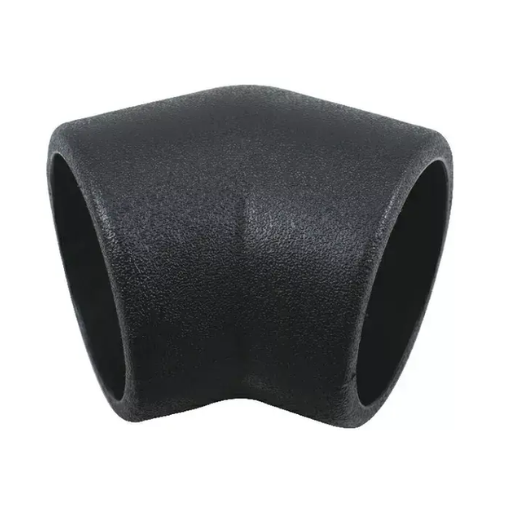The importance of Socket Fusion 45° Elbow fittings in modern piping systems is paramount, especially in industries where precision and durability are crucial. What are Socket Fusion 45° Elbows, what are their various applications, and how do they enhance the efficiency and reliability of piping systems?
Key Features of Socket Fusion 45° Elbow
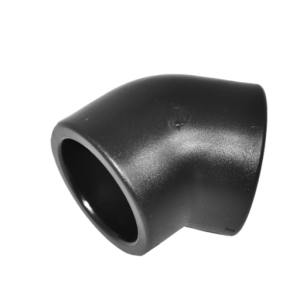
Image source: https://hdpesupply.com/
In various industries, the Socket Fusion 45° Elbow is known for several key features that make it an important part of pipe systems installed in them. Understanding these features will help you determine which elbow you need.
Material Composition and Durability
Socket Fusion 45° Elbows are usually manufactured from high-grade thermoplastics like polyethylene (PE), polypropylene (PP), or polyvinyl chloride (PVC). These materials are selected because they possess excellent resistance to chemicals, long life expectancy, and can withstand high temperatures and pressures. Their material quality ensures that even in challenging conditions such as chemical plants or oil refineries, the Socket Fusion 45° Elbow maintains its shape.
Additionally, their resistance to corrosion, scaling, and chemical degradation makes these elbows more durable, especially in aggressive fluid environments or under severe conditions. The best performance characteristics, including strength, flexibility, and environmental resistance, can be found only in good-quality thermoplastics.
Design Specifications and Standards
The Socket Fusion 45° Elbow is designed according to strict industry standards, guaranteeing compatibility and safety across different applications. Precisely engineered to maintain a 45-degree angle, these elbows enable a smooth change of direction for pipes without overburdening the system. They come in various sizes and pressure ratings, thus being suitable for different types of installations.
To ensure that these elbows meet the necessary safety and performance criteria, they are usually made following standards such as ASTM D3261 for polyethylene fittings or ISO 4427 for water supply systems. Adherence to such standards makes the practical use of Socket Fusion 45° Elbow possible in both high-pressure and low-pressure situations.
Benefits of Using Socket Fusion 45° Elbow
A few benefits associated with using a Socket Fusion 45° Elbow include:
- Leak-Proof Joints: The socket fusion method creates a homogenous joint that is leak-proof, reducing the risk of fluid or gas escape and ensuring the system’s integrity.
- Reduced Flow Resistance: The 45° angle is optimal for maintaining smooth flow within the pipe, reducing the chances of turbulence and pressure drops.
- Easy Installation: The design of the Socket Fusion 45° Elbow simplifies the installation process, making it quicker and more efficient compared to other joining methods.
- Cost-Effective: Due to its durability and ease of installation, using these elbows can lower overall maintenance costs and extend the lifespan of the piping system.
- Versatility: These fittings can be used in a wide range of applications, from residential plumbing to complex industrial systems, so they are quite flexible when it comes to various piping needs.
To sum up, Socket Fusion 45° Elbow is an important component in piping systems due to its high reliability, longevity, and efficiency. It also conforms to many strict industry regulations while increasing its total performance capabilities in many ways.
Installation Process for Socket Fusion 45° Elbow
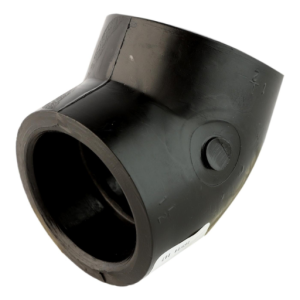
Proper installation of a Socket Fusion 45° Elbow is necessary to ensure that your piping system will last and work well. This guide offers a step-by-step guide on the required tools, installation process, and common mistakes.
Tools and Equipment Required
The following are the tools and equipment that you will need in order to successfully install a Socket Fusion 45° Elbow:
- Socket Fusion Welding Machine: The machine heats both the pipe and the fitting together making fusion secure enough.
- Pipe Cutters: To be used to cut pipes with accuracy so that they attain their correct lengths
- Pipe Chamfering Tool: It is used to chamfer the ends of pipes so as to have a smooth edge which is critical for good fittings
- Alignment Tools: These ones ensure that both the pipe and 45° Elbow are correctly aligned during fusing
- Temperature Gauge: used in monitoring the heating elements so as to maintain the right temperature throughout.
-
Marking Pen: This tool is utilized to mark where the pipe should be inserted.
Step-by-Step Installation Guide
- Preparation: Cut the pipe to length using the pipe cutters. Ensure that cuts are squared and have no burrs. Then bevel the ends of the pipe using a chamfering tool. This is important to avoid material build-up during fusion.
- Heating: Set your socket fusion welding machine to the right temperature, which is usually between 260°C and 280°C for most thermoplastics. Meanwhile, put together one end of this pipe with Socket Fusion 45° Elbow at once in their corresponding holes on the machine and heat it within the specified time, which depends on the sizes of pipes and fittings.
- Joining: At the end of the heating time, rapidly remove both the pipe and 45° Elbow from the heated sockets. Then slide the tube into the elbow, ensuring smooth motion until the mark’s depth content is reached. Hold them for a few seconds until the materials bond.
- Cooling: Allow the joint to cool naturally without any movement or stress within the cooling period, as this will guarantee a strong leakage-free connection.
-
Inspection: After it has cooled off completely, examine the joint to ascertain that its fusion was complete and that a secure bond exists between the pipe and elbow joints. The joint should look consistent without any visible openings or flaws.
Common Mistakes to Avoid During Installation
- The wrong heating time: Overheating or underheating the components can weaken the bond established. Always use the recommended heating times given by the manufacturer.
- Misalignment: Incorrect alignment of pipe and Socket Fusion 45° Elbow during the fusion process will lead to failure at the joint. To ensure proper positioning, use tools for alignment.
- Rushed Cooling: Moving or disturbing the joint before it completely cools off may affect its connection integrity. At this point, patience is important.
- Improper Pipe Preparation: Improper chamfering or cleaning of pipe ends may result in poor fusion quality, which can lead to leaks or system failures.
- Ignoring Temperature Control: It is important to ensure that the socket fusion machine remains at a specific temperature level throughout the process. With respect to fluctuations in temperature range, the quality of welds can improve.
In conclusion, if you follow these steps closely and avoid some common mistakes, you will get a long-lasting, dependable connection using your Socket Fusion 45° Elbow that will perform well for many years. Proper installation is key to maximizing the efficiency and longevity of your piping system.
Maintenance and Inspection of Socket Fusion 45° Elbow
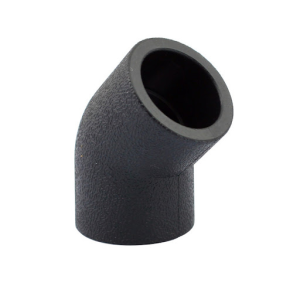
This section provides guidelines on how best to maintain routine maintenance practices, inspect for wear and tear, and troubleshoot common problems with your Socket Fusion 45° Elbow fittings.
Routine Maintenance Tips
To keep your Socket Fusion 45° Elbow and entire piping system operating optimally, adhere to these guidelines on routine maintenance:
- Regular Cleaning: The whole piping system, including the 45° elbow, should be clean and free from debris or chemical build-up. This is especially critical when dealing with aggressive fluids; regular flushing with appropriate cleaning agents prevents blockage and material degradation.
- Pressure Checks: Periodically check pressure levels within the system against allowed limits according to material specifications. High pressure sometimes stresses joints, including those at SFE, causing leakage/failure.
- Temperature Monitoring: Check temperatures inside the facility to ensure they do not go beyond certain limits. When too hot, thermoplastic weakens, and its life expectancy decreases, thereby affecting the fittings.
- Lubrication: Any mobile part adjacent to Socket Fusion 45° Elbow may need lubrication in systems that require it to avoid wear caused by friction, but the elbow itself does not need lubrication.
-
Inspection Schedule: Set up a routine inspection timetable that suits your system’s unique features – this helps identify problems before they become more pronounced.
How to Inspect for Wear and Tear
It is important to frequently inspect Socket Fusion 45° Elbows to ensure the system’s piping integrity. To effectively inspect these fittings, follow these guidelines:
- Visual inspection: Begin by comprehensively examining the 45° Elbow for cracks, discoloration, or deformations that might indicate material degradation or poor fusion.
- Joint Integrity Check: Inspect the fusion joint closely to determine its homogeneity. The surface of a good joint should be smooth and unbroken, and no gaps or voids should be visible. Any visible abnormalities can affect the performance of the elbow/
- Leak detection: Conduct pressure tests or use specialized leak-detection equipment to confirm no leaks at Socket Fusion 45° Elbow. Even small leaks can result in large system inefficiencies over time or even complete failure.
- Thermal imaging: In heat-fluidating systems, thermal imaging helps identify hot spots and uneven temperature distribution around the 45° Elbow. This might indicate issues with the joint or material.
- Ultrasonic testing: Ultrasonic testing can detect internal flaws/ inconsistencies in Socket Fusion 45° Elbows without requiring its dismantling for critical applications.
Troubleshooting Common Issues
Socket Fusion 45° elbows may still develop problems regardless of proper installation and maintenance. Here are some common issues and what you should do:
- Joint Leaks: If a leak is found on the surface of a fusion joint, it may have resulted from incorrect heating during its installation or strain on the connection. This means such an elbow has to be replaced while reviewing how it was installed to prevent future incidences.
- Cracks on the Elbow: Excessive pressure, thermal cycling, and chemical exposure may cause fractures. If cracks are noticed, replace them immediately and check operating conditions within the system for potential future problems.
- Deformation/warping: Warping usually occurs when the Socket Fusion 45° elbow is subjected to temperatures beyond its rated capacity; this calls for replacing the elbow and dealing with the cause, in this case, system overheating.
- Blockages: Over time, sediment or scale might accumulate internally within the elbow, especially in systems conveying fluids with high amounts of particulate matter. Regular maintenance and flushing will help prevent clogging.
By practicing these maintenance and inspection protocols, you can significantly extend the life span of your Socket Fusion 45° Elbow and maintain an efficient piping system. Regular checks on these fittings will enable one to avoid expensive repairs and downtime, streamlining operations.
Compliance and Safety Considerations
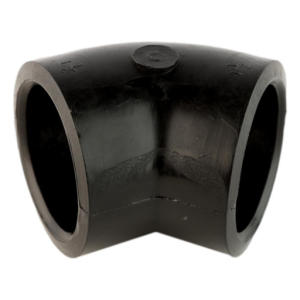
When using Socket Fusion 45° Elbows, it is essential to follow the rules and safety practices observed in the industry. This includes appropriate standards and certifications, installation and use precautions, and environmental considerations.
Relevant Standards and Certifications
For Socket Fusion 45° Elbow fittings to be certified as safe, reliable, and high-performing, they must meet various international standards. Some of them are:
- ASTM D3261: A standard defines the requirements for polyethylene (PE) plastic fittings used in socket fusion procedures. It ensures a 45-degree Socket Fusion Elbow conforms to specified material and performance prerequisites for pressurized pipe systems.
- ISO 4427: This global standard covers polyethylene pipes and fittings designed for water supply only. Therefore, ISO 4427 guarantees that the Socket Fusion 45° Elbow can be safely used with potable water systems.
- NSF/ANSI 61: Socket Fusion 45° Elbows should be NSF/ANSI 61 certified to be utilized safely in drinking water applications. This ensures that they will not contaminate drinking water supplies by migrating deleterious substances.
-
ISO 9001 Certification: The fact that a company producing Socket Fusion 45° Elbows is ISO-9001 accredited implies its commitment to ensuring quality control throughout production, thus guaranteeing consistently standardized products from its facilities.
Safety Precautions During Installation and Use
The most important thing to remember when installing and using Socket Fusion 45° Elbows is safety. To prevent accidents and ensure that installation is secure, one should observe the following precautions:
- PPE (Personal Protective Equipment): Installers must always wear inappropriate PPE, such as fire-resisting gloves, goggles, and overalls, to avoid burns when socket fusing.
- Adequate ventilation: Properly ventilate the working area, especially during the heating of pipe or fittings, so as not to breathe in any fumes released during fusion.
- Control of temperatures: The temperature on a socket fusion machine must be set properly, typically between 260°C and 280°C, depending on the material. Overheating weakens the fitting while underheating results in an incomplete fusion.
- Handling equipment safely: Exercise caution whenever handling a heated component or socket fusion machine. Ensure that the apparatus is operational and that all safeguards, including thermostats, have been applied where needed.
- Training and Certification: Personnel handling Socket Fusion 45° Elbows should be trained to install them correctly. This will ensure that they know about specific safety requirements while operating this type of machinery.
-
Safety Checks After Installation: The contractor performs intensive checks to ascertain no leakages or loose joints in the fused area. The system is pressure tested first before being put into service.
Environmental and Regulatory Compliance
In addition to safety and performance standards, it is also required that socket fusion 45° Elbows meet environmental regulations and best practices:
- Environmental Impact of Materials: The thermoplastics used in Socket Fusion 45° Elbows are generally recyclable, meaning they have a lower ecological footprint. Nonetheless, fittings should be obtained from manufacturers with a reputation for sustainable manufacturing processes.
- Waste Management: Always ensure that off-cuts used fittings, etc., are disposed of responsibly while installing them. This may involve recycling or adherence to industrial waste disposal guidelines set by local authorities.
- Regulatory Compliance: Depending on the application, especially water supply and gas distribution systems, this will require compliance with local or national regulations. For instance, Socket Fusion 45° Elbows must comply with drinking water system guidelines established by relevant health and safety authorities.
- Sustainability Initiatives: Manufacturers develop some of these products with environmental sustainability certifications, such as ISO 14001, which focuses on environmental management systems. Such choices can enable companies to achieve their sustainability objectives.
By doing this, you will not only use effective Socket Fusion 45° elbow fittings but also ones that are safe enough for the environment. Proper adherence to standards and regulations reduces risks and improves the reliability and efficiency of your piping systems.
Comparison with Other Types of Elbows
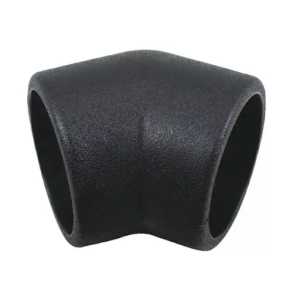
When selecting an appropriate elbow for your piping system, it is crucial to compare a Socket Fusion 45° Elbow with alternative types of elbows in the market. This section explores how socket fusion differs from other fusion methods and when one should consider choosing a Socket Fusion 45° Elbow over other options.
Differences Between Socket Fusion and Other Fusion Methods
Socket Fusion means welding thermoplastic pipes together typically made of materials like polyethylene (PE), polypropylene (PP), and polyvinyl chloride (PVC). Below are some similarities and differences between it and other standard methods:
- Butt Fusion: The ends of the pipes or fittings are heated and then pressed together to create a bond in butt fusion. Unlike Socket Fusion, where a pipe is inserted into the socket, which then fuses, this requires accurate alignment as it is mainly used on larger diameter pipes. However, Socket Fusion 45° Elbows are preferred for smaller pipes, especially when there isn’t enough space for large-sized joints in applications where alignment tools are considered unnecessary.
- Electrofusion: Fittings with embedded heating elements activated by electric current to fuse the pipe and fit together are used during electrofusion. On the other hand, electrofusion produces excellent results when making joints in confined spaces since it will always give reliable connections. Still, it tends to be costlier than others due to its specific requirements. However, such issues have been addressed by using socket fusion 45 degrees elbow, which has proved to be more economical, mainly where the simplicity of the socket fusion process works well.
- Compression Fittings: Compression fittings join pipes and fittings mechanically, often without employing heat. These are easy to install since their use does not require any special equipment, unlike the cases of compression fittings, but they cannot compete with socket fusion elbows under high pressure or corrosive fluids. Regarding durability and longevity, there is no better way than using socket fusion, which provides a joint that never leaks.
-
Threaded Elbows: They are screwed onto metal piping systems. These are typically used in metallic pipe systems. While they can be easily dismantled and reassembled, they tend to leak more often over time, especially for systems that vibrate or undergo thermal cycling. However, using Socket Fusion 45° Elbows in such cases results in a permanent joint that cannot leak, as is always possible with threaded connections.
When to Choose a Socket Fusion 45° Elbow Over Other Options
This Socket Fusion 45° Elbow is excellent in different areas.
- Small to Medium-Diameter Pipes: Socket Fusion is recommended for small-to-medium-diameter pipes where the fusion process is simple and reliable. The 45° Elbow works well in applications requiring precise direction changes without sacrificing joint integrity.
- Economical Solution: When budgetary concerns are considered, Socket Fusion 45° Elbows are cheaper than the alternative methods, such as electrofusion or butt fusion but still provide a robust and durable joint.
- Suitable for High-Pressure Applications: Socket Fusion joints do not leak in high-pressure systems, making them better than threaded or compression fittings, which may fail under high-pressure conditions.
- Corrosion Resistance Systems: The thermoplastic materials used in Socket Fusion 45° Elbows can withstand corrosion. One should be chosen instead of metallic parts like threaded elbows that corrode with time if there are corrosion concerns.
- Long-term Reliability: If the piping system is to serve for many years with minimal maintenance, choose a Socket Fusion 45° Elbow because of its permanent and dependable joint that minimizes leakage risks and failures over time.
In summary, although several types of elbows and fusion techniques are available on the market, it’s clear that this particular elbow type (Socket Fusion 45° Elbow) has gained popularity due to its dependability, affordability, and versatility in various piping systems. Its durability during use, ease of installation, and performance have led to its preference in many applications.
Conclusion and Best Practices
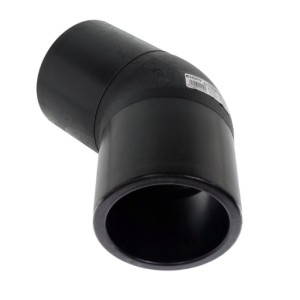
In other words, the Socket Fusion 45° Elbow is a crucial part of many pipe systems; it provides a dependable, long-lasting, and efficient way to change the flow direction. In this guide, we have covered essential considerations such as key features, installation practices, repair practices, code compliance requirements, and how Socket Fusion 45° Elbows compare with other elbows.
Socket Fusion 45° Elbows are preferred for their ability to form leak-free joints, corrosion resistance, and cost-effectiveness, which make them suitable for high-pressure and corrosive environments. However, to achieve this, you must adhere to industry standards when installing the fittings, following proper procedures and regular inspections.
Expert Recommendations for Optimal Performance
Some suggestions on getting the most out of your Socket Fusion 45° Elbow include:
- Adequate Training: Ensure that all personnel handling the installation and maintenance of Socket Fusion 45° Elbows are well-trained and certified. This is important to minimize the chances of wrong installations and correctly handle these fittings correctly.
- Regular Inspections: Carry out routine checks on the joints or fittings to detect any tears or leaks in time. Identifying these issues early enough can help save on expensive repairs and downtime expenses.
- Follow Standards: Always utilize only socket fusion elbow 45 degrees that meet set standards such as ASTM D3261 and ISO4427, among others. This ensures they are safe and fit for your application, meeting safety requirements.
- Environmental Concerns: Choose materials or practices that have less effect on the environment, e.g., use recyclable items while ensuring proper waste management procedures are followed.
By following these guidelines, you will ensure that your Socket Fusion 45° Elbows function correctly, contributing to the overall success of your piping system. This guide has provided all-inclusive information on implementing Socket Fusion 45 ° elbows in your projects, ensuring safe and dependable operation.
Reference sources
-
ASTM International – Standard Specification for Socket Fusion Tools for Use in Socket Fusion Joining of Polyethylene Pipe or Tubing
https://www.astm.org/Standards/F1056.htm
This document provides the standard specifications for socket fusion tools, which are crucial for ensuring the proper joining of polyethylene pipes and fittings, including Socket Fusion 45° Elbows. -
Niron – Socket Fusion 45 Degree Elbow ND 110mm PP-RCT
https://pprsupply.com/4-socket-fusion-45-degree-elbow-nd-110mm-pp-rct/
This source provides comprehensive specifications and application requirements for Socket Fusion 45° Elbows, including material standards and available sizes, ensuring users understand the product’s compatibility and performance. -
Puhui Industry – Socket Fusion 45 Degree Elbow
https://www.phtopindustry.com/product/socket-fusion-45-elbow/
This product page details the specifications, standards (EN12201, ISO 4427, AS/NZS 4129), and applications of Socket Fusion 45° Elbows made from high-quality PE100 material, making it a reliable source for understanding the product’s feasibility and usage.
Related Articles: Socket Fusion 45° Elbow Application Areas



